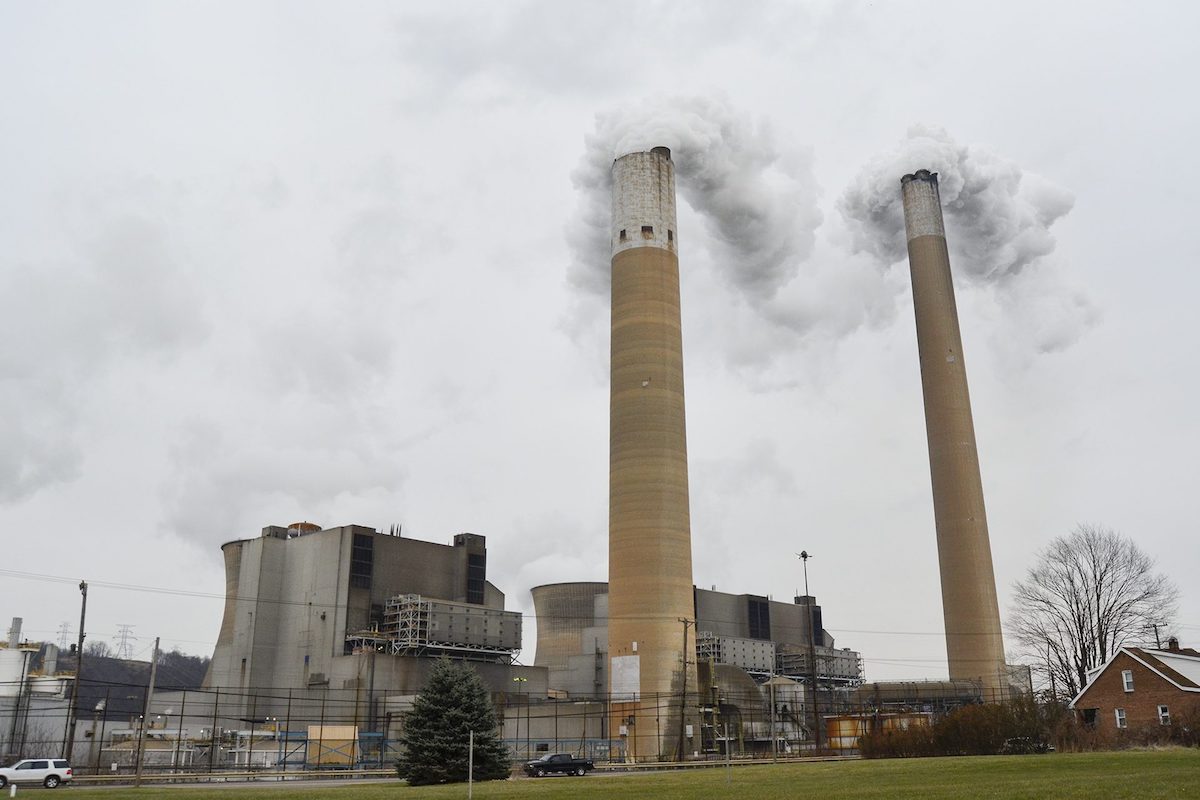Peabody Energy is one of the largest coal companies in the world and operates mines all over the United States. But some of its senior lenders are now recommending bankruptcy, as the company faces potential defaults on several loans.
If the coal giant goes under, it would be the latest in a string of major producers to file for Chapter 11. Two of country’s biggest coal companies, Arch Coal and Alpha Natural Resources, have both filed for bankruptcy in the past eight months.
But if you drive through Wyoming’s Powder River Basin—an area that produces around 40 percent of U.S. coal—dynamite blasts still shake the earth, and miners in gigantic trucks are still scooping up coal. In fact, according to data compiled by S&P Global Market Intelligence, during the fourth quarter of 2015, around 36 percent of all coal produced in the state was mined by companies in bankruptcy.
So what does bankruptcy actually mean?
It doesn’t mean that a business just shuts down. Essentially, in Chapter 11 bankruptcy, a company develops a reorganization plan that allows it to stay alive and pay back some of its debts over time.
LISTEN: “What Bankruptcy Means for Coal Workers”
As we’ve heard from Donald Trump, who has filed for bankruptcy for some of his businesses, it is not uncommon.
“Out of hundreds of deals that I’ve done, hundreds, on four occasions, I’ve taken advantage of the laws of this country—like other people,” Trump said during a Republican presidential debate in August.
Last year, nearly 25,000 businesses filed for bankruptcy in the U.S. Of that number, some 6,000 were Chapter 11 reorganizations.
Cutting jobs is a common tactic in bankruptcy reorganizations. Bankrupt Alpha Natural Resources has announced several rounds of planned layoffs—as has Patriot Coal, a company that has filed for bankruptcy twice.
According to data from S&P Global Market Intelligence, central Appalachia lost around 19 percent of its coal mining jobs last year, while Wyoming jobs dropped by just 1.5 percent.
But coal’s financial struggles have a broad impact in the state.
“I’m very worried about what’s going to happen,” says Jean Wagner, a retired coal miner from Gillette, Wyoming. “Coal mining has done a lot for the communities, and it’s done a lot for the people who work at them. We raised our kids. We put the oldest one through college. It was a very good living for us for a lot of years.”
Although Wyoming has not yet been hit with major layoffs, Jean Wagner’s worry is real. Wyoming mines are still churning out coal, but they are churning out less of it. Production is down 14 percent since 2011. State revenues from production are down too.
Cuts to retiree benefits like medical and life insurance are another very real impact on coal communities.
“When it comes to bankruptcy, the ones that lose the most are the workers and the retirees,” says Cecil Roberts, president of the United Mine Workers of America.
“Some of the miners who have retired, everything that they’ve earned over a 40- or 50-year career is at risk here. I find that to be terribly tragic.”
A few years ago, Patriot Coal, a spinoff of Peabody Energy, tried to cut benefits for thousands of unionized workers. After many rounds of negotiations, Patriot’s estimated $1.3 billion in accrued benefits were reduced to a pool of just $400 million to fund ongoing healthcare costs. The future of that account is now in question because Patriot declared bankruptcy again in May.
“I’m very worried about what’s going to happen. Coal mining has done a lot for the communities, and it’s done a lot for the people who work at them. We raised our kids. We put the oldest one through college. It was a very good living for us for a lot of years.”
A similar scenario is now playing out with Alpha Natural Resources. The company has asked a judge for permission to cut medical and life insurance for nearly 5,000 non-union retirees.
In court documents, Alpha refers to this $125-million liability as a “financial burden,” and getting rid of it would “enhance the debtors’ prospects of a successful reorganization.”
But exiting bankruptcy is not a sure thing. According to the UCLA-LoPucki Bankruptcy Research Database, since the year 2000, 36 percent of large public companies have not emerged from bankruptcy.
The uncertainty doesn’t end there.
“I think there is a very significant potential problem and risk to the taxpayer with the pretty high-profile bankruptcies that have taken place recently with coal companies,” said Secretary of the Interior Sally Jewell at a recent Senate hearing, answering questions about mine cleanup.
Reclamation costs are another huge potential impact of a failed coal company.
Major bankrupt coal companies in Wyoming have hundreds of millions of dollars in cleanup liabilities. These are among the many debts being dealt with in bankruptcy court. Ultimately, the hope is that the companies will emerge from bankruptcy and be able to put up cash or surety bonds for those reclamation responsibilities.
Although bankruptcy can have serious consequences for coal-dependent communities, shutting down completely is seen as worse.
“From our point of view, we want coal companies to continue to operate because a viable coal company is the one that is best at reclaiming the land,” said Pat Sweeney, senior advisor at the Western Organization of Resource Councils.
Negotiations are ongoing between bankrupt coal companies and their creditors over which debts will be paid back, by how much and in what order. But at least in one recent case, there’s one obligation that seems likely to be paid. In January, a bankruptcy judge approved up to $12 million in bonuses for executives at Alpha Natural Resources.
###
This story comes from our partners at Inside Energy, a reporting project covering energy issues from North Dakota, Colorado and Wyoming.


